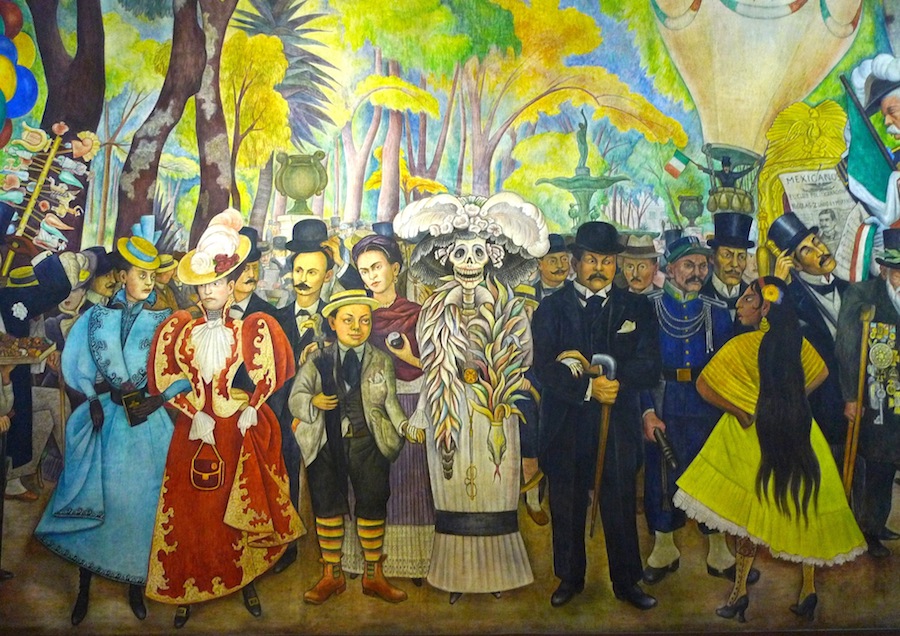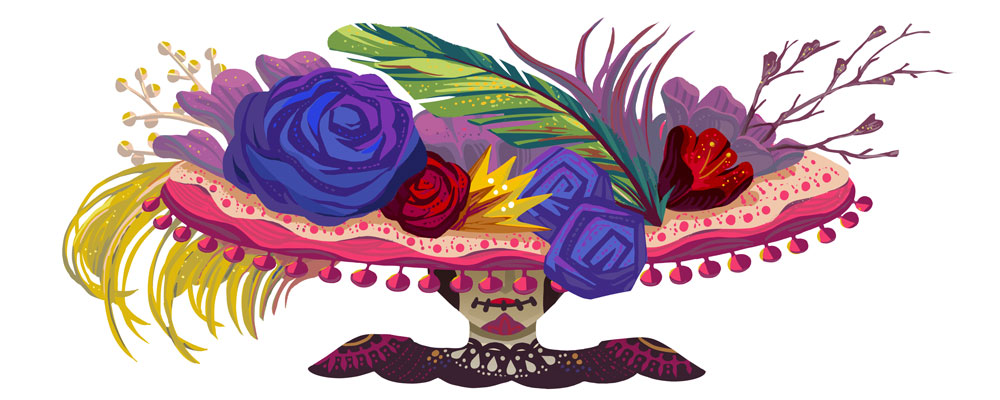
By Marcia Morgado
One of Mexico’s most vibrant and popular festivity has roots reaching across faraway places and different religious beliefs: Day of the Dead is as an extension of Olmecs, Mayans, and finally Aztecs. Their spiritual practices adapted to coincide with the Catholic calendar.
The Spanish conquistadores worked aggressively to convert the original inhabitants to Catholicism. Those targeted responded creatively to preserve their traditions. Under the guise of complying, they performed certain rites protected by festivities approved by the men invading their world. The Spaniards’ determination to gain converts directly responded to the dictates of the Catholic Church and Isabel of Castile.
The devout monarch financed Christopher Columbus’s travels across the Atlantic for power and to gain converts for the Church’s glory. The Spaniards commitment to eradicate what they viewed as pagan cults meant doing away with the gods and religion worshipped by the autochthonous people. Forced to choose between conversion and death, they opted to improvise by transposing and fusing their original practices into the Catholic calendar.
The Aztec paid homage to Mictecacihuatl, goddess of the underworld, responsible for watching over the dead’s bones. We see her portrayed as La Catrina, a flexible skeleton wearing a colorful wide-brimmed hat exploding with flowers. The Aztecs borrowed dates and some imagery such as crosses from the Spaniards. Their altars became an intrinsic component of the Day of Dead’s offerings celebrated from October 31 to November 2.
Initially, early Christians celebrated the Feast of All Saints in May. Then, during Gregory IV’s papacy (827-844), it was moved to November 1; years later, All Souls Day joined on November 2. Currently, Mexico celebrates the Day of the Dead between October 31 and November 2.
The fusion of original traditions and Christian ingredients comes to live on each Day of the Dead celebration.

by José Guadalupe Posada,


TrackBack URL
http://www.latinaonthego.com/uncategorized/the-triumph-of-adjusting/trackback/